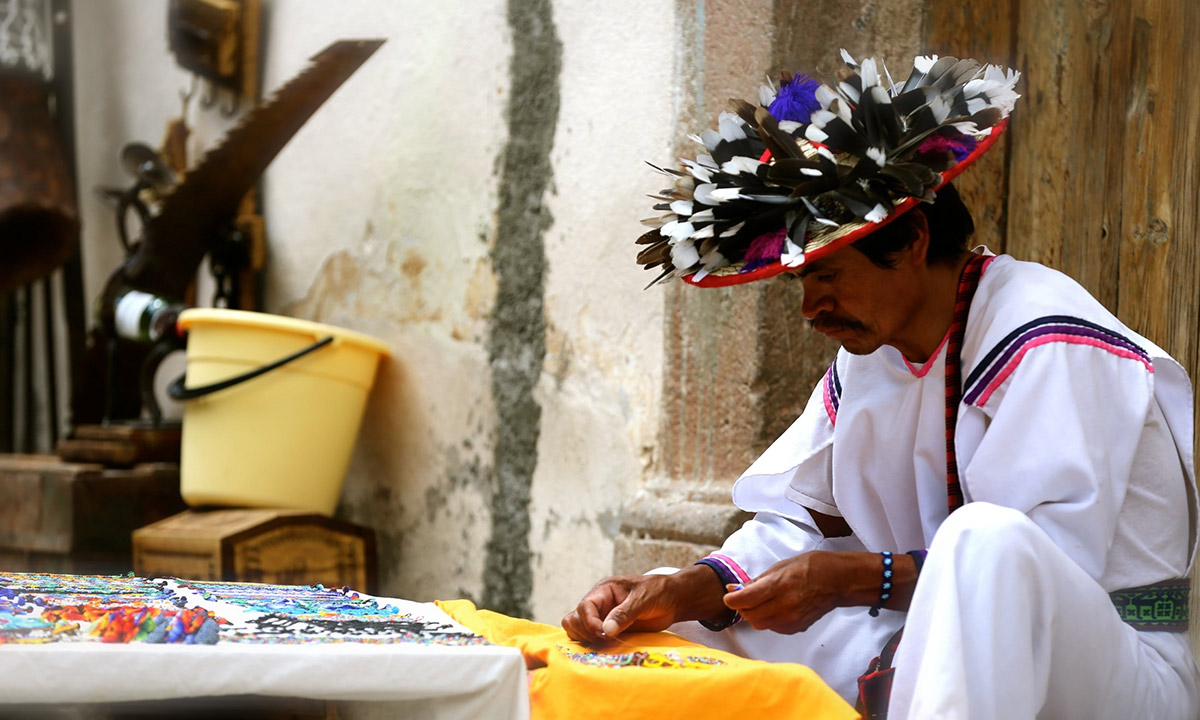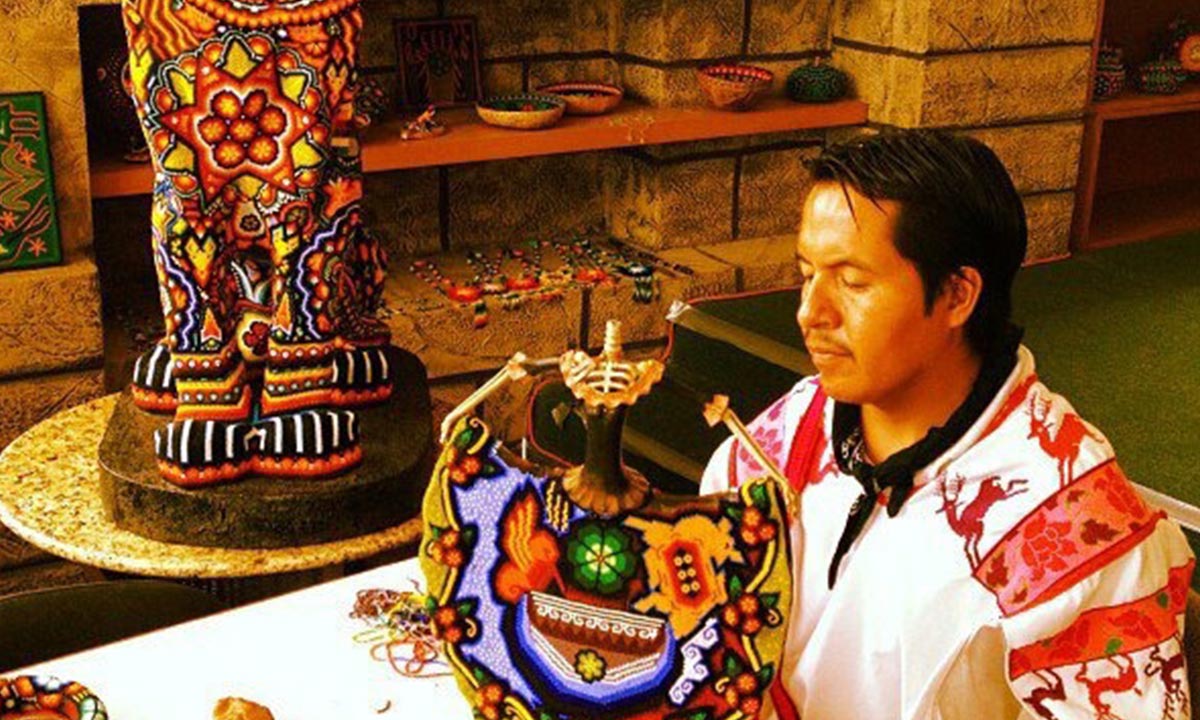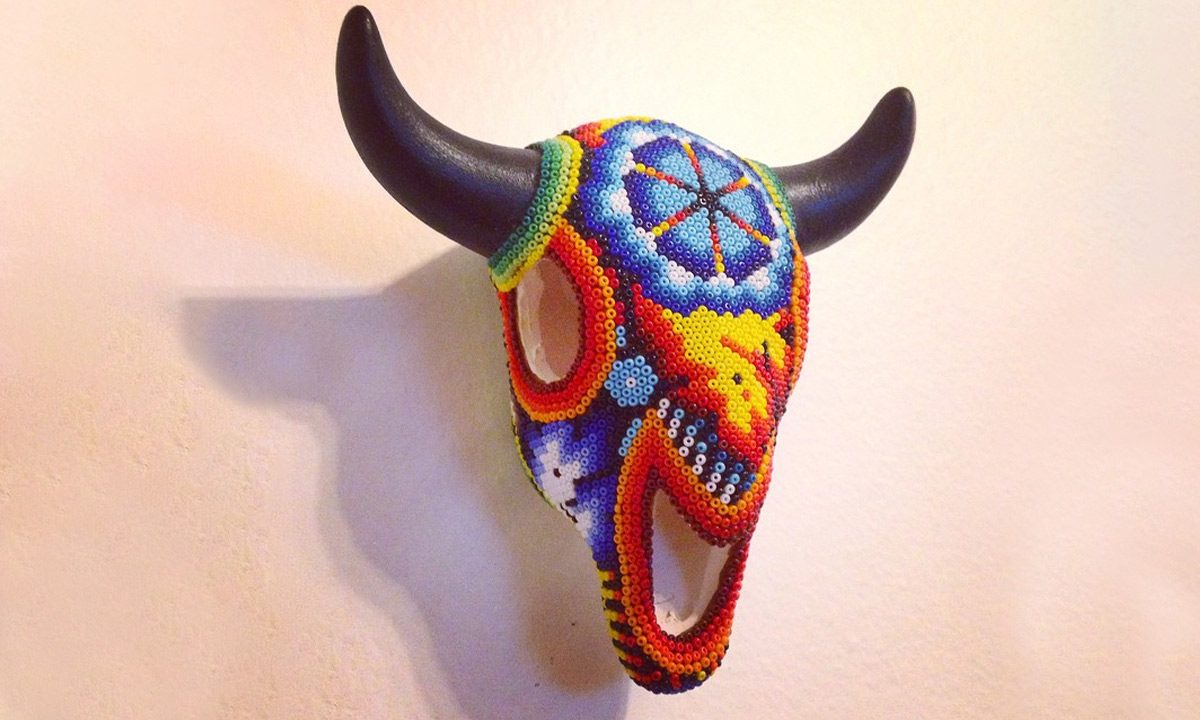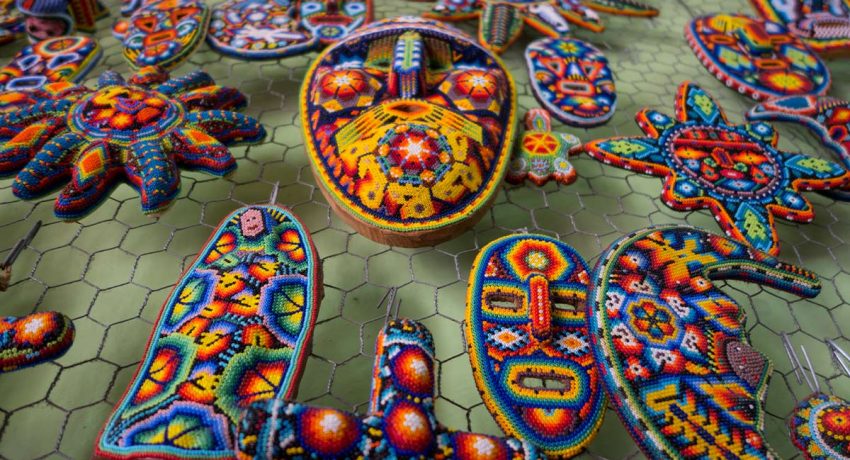The Huichol people are an ethnic group that has preserved ancient practices of generations before them. They are spread throughout Mexico living in the states of Jalisco, Nayarit, Zacatecas, and Durango. Many also live in the mountains dividing these states (the Sierra Madre Occidental) and have been there for at least 15,000 years according to carbon dating. The Huichols also refer to themselves as Wixárika, which translates to “the people” from the native Huichol language.
Huichol Origin
Many of the Huichol (or Wixárika) people’s origins may be traced back to the state of San Luis Potosí, where they travel back to annually to gather peyote. Peyote is a cactus that is native to Mexico, with psychoactive properties. It is used in many rituals and medicinal treatments by Indigenous North Americans. It is also one of the Huichol’s four principal deities (amongst corn, blue deer, peyote, and the eagle). Peyote is seen as a visionary sacrament that holds a pathway to other deities.
It is believed that the Wixárika arrived at the Bolanos Canyon around the same time the Spaniards did. They settled there among the Tepecano settlements and likely banded together to fight against Spanish incursions.
Religion and Customs
These indigenous people hold many traditions and mystical beliefs in relation to their story of origin. Huichol culture believe that the mountains surrounding them (the Sierra Madre Occidental) are the home of mystical creatures. Prominent characters in these tales are trees, labyrinths, mountains, oceans, moons, and suns; they are also all expressed in their art and religious customs.
Corn, blue deer, peyote, and the eagle are all descendants of the sun god, “Tao Jreeku.” The eagle is embodied in the form of a female sky deity, the deer as the culture’s trickster and hero, the corn as a goddess who also makes the earth fertile with her rain, and peyote as a door to the spiritual world. All of their deities have the pronoun “our.” For example, the sun god Tayaupá is “our grandfather.”

The Huichol believe there are two main forces governing their world: Tayaupá the sun god and Nacawé the rain goddess. The myth goes that Tayaupá created humans with his saliva, who were born on the ocean waves. Tayaupá’s essence is a bird, which flew from the underworld and placed a cross on the ocean. Tayaupá climbed the cross and killed all the darkness of the world, leaving only light.
Peyote is used in many religious rituals of the Huichol. The rituals are usually performed in order to contact the spirits of ancestors and involve both singing and weeping.
Once a year, the Huichol embark on a pilgrimage to gather peyote in Wirikuta. Along the way they pass the springs of Tatéi Matiniéri, which is where the eastern rain goddess lives. Once they arrive in Wirikuta, they begin the search and the first cactus found is shared with everyone. They make sure to harvest enough peyote for the year. Once this is done, the Huichol eat peyote to have “visions.” The shaman speaks to the gods through these visions to ensure protection and regeneration of the Huichols’ souls.
The Mexican government has allowed for peyote to be used in the context of religious practices only. Outside of this, users may be put in prison from ten to twenty-five years. Due to this, it has gotten more difficult for the Huichol to find peyote. The Mexican government has stepped in to protect a section of trail that the cactus grows on.
Food
In the summer, the Huichol make cheese from the milk produced by their cattle. Their diet primarily consists of rice, pasta, beans, tortillas made from blue, red, yellow, and white corn, chicken, pork, chili peppers, as well as wild fruits and vegetables such as wild plums (“ciruelas”) and guava (guayabas).
Lifestyle
Marriages of the Huichol are quite often arranged by the couple’s parents and take place between the ages of fourteen to seventeen. Huichol families live together in rancho (ranch) settlements, with communal kitchens and family shrines called “xiriki.” The ranchos are built out of stone and topped with grass-thatched roofs.

Xiriki are made of wooden images of deities, ceremonial paraphernalia, deerskin bows and arrows, log drums, clay pots, and more. The most important part of the xiriki is the small crystal bundle tied to a prayer arrow, which represents a deceased ancestor (most often a shaman). This bundle acts as a guardian of the rancho community.
Districts of related ranchos are referred to as a temple district. Temple districts make up a larger community district, and each community district is governed by a council of elder men called “kawiterutsixi,” also often known as shamans.
About one-third of adult Huichol men function as low-level shamans and are therefore able to communicate with ancestral deities through symbolic designs, chants, and prayers.
Huichol Art
The Huichol make many forms of art, including crafts such as embroidery, beadwork, hats, prayer arrows, and embroidered bags (“cuchuries”).
One of the most important art practices to Huichol culture is the creation of “nieli’ka.” Nieli’kas are small round or square amulets with a hole in the center. They are covered in resin and beeswax with threads of yarn pressed into them to create beautiful patterns. Nieli’kas are found in sacred places such as temples, springs, caves, and house shrines.

Not only is this yarn painting aesthetically pleasing, but it is also full of symbols representing Huichol culture and their shamanistic traditions. A higher level of shamanic practice requires a person to gain consensus from their community, have garnered prestige and trust, and have led at least five peyote pilgrimages successfully.
The Huichol culture is one that has survived many years and is still authentic to their original practices and traditions today. It is a very interesting part of Mexico’s history. The Huichol people are proud of their heritage and their traditional ways.
















